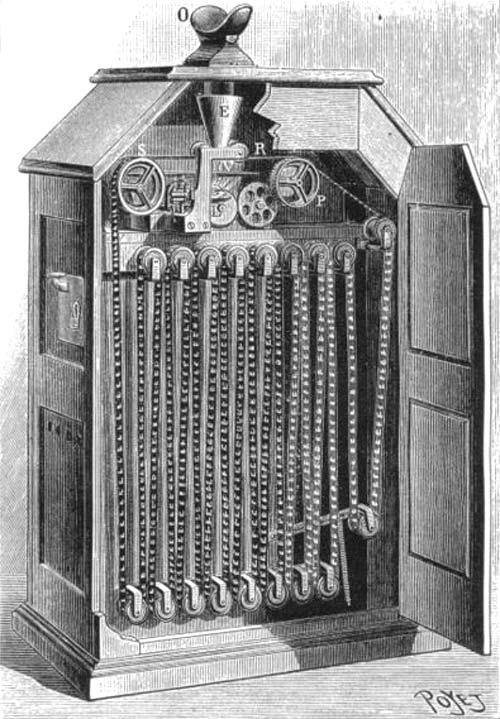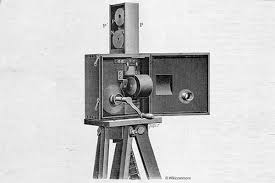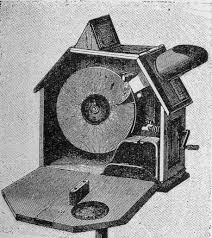In 1891, the Kinetoscope (pictured below) was invented by W.K.L. Dickson, who obtained Eastman film stock, cut it into 1-inch-wide (~35mm) strips and punched four holes on either side of the frames so that toothed gears would pull the film through the Kinetograph camera and Kinetoscope. Viewers put a coin in a slot to view the film. The invention was patented by Thomas Edison.

Since the invention of the Kinetoscope, the 35mm film stock with 4 perforations each frame became the standard. The Lumière brothers Louis and Auguste designed the Cinématographe in 1894 (pictured below). It used 35mm film and an intermittent mechanism like what is used in a sewing machine. The camera printed the positive copies and then, when mounted in front of a magic lantern, was used to project as well. They shot their films at 16 frames per second rather than the 46 frames Edison used, and this became the standard throughout the silent era.

In 1894, Herman Casler patented the Mutoscope (pictured below). This was a penny-in-the-slot machine where the viewers turned a crank to view a series of photographs on a rotating drum. He needed a camera and went to W.K.L. Dickson for assistance. They, along with other partners, formed the American Mutoscope Company. By 1896, Casler and Dickson had a camera, but they decided to focus on projection (as the peepshow market was in decline by this point). They then made films and had programs at theatres and vaudeville shows around the country.

Leave a Reply